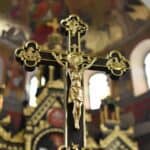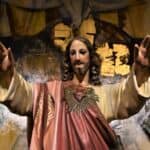Introduction
The Church of the Nativity, located in Bethlehem, is one of the holiest sites in Christianity. It is traditionally believed to be the birthplace of Jesus Christ, making it a major pilgrimage destination for Christians worldwide. With a history spanning over 1,700 years, the church is one of the oldest continuously operating churches in the world. Recognized as a UNESCO World Heritage Site, it holds profound religious, historical, and architectural significance.
Historical Background
The origins of the Church of the Nativity date back to the early 4th century when Emperor Constantine the Great and his mother, Saint Helena, ordered its construction over the cave believed to be the birthplace of Jesus. The church was completed in 339 AD but was later destroyed during the Samaritan Revolt in the 6th century.
In 565 AD, Emperor Justinian rebuilt the church, enlarging and strengthening the structure, much of which still stands today. Throughout the centuries, the church has survived invasions, earthquakes, and political changes, thanks to its religious importance and careful maintenance by various Christian denominations.
During the Crusades, the church was expanded and adorned with mosaics and paintings. Later, under Ottoman and British rule, restoration efforts were carried out to preserve its sacred legacy. Today, the Church of the Nativity remains a spiritual and cultural treasure, attracting millions of visitors annually.
Architectural Significance
The Church of the Nativity is an architectural masterpiece that reflects a blend of Byzantine, Crusader, and later influences. It features a basilica-style design with stone walls, wooden beams, and intricate mosaics. The church complex includes several key areas:
Key Sections of the Church:
- The Basilica – The main church building features high ceilings, large columns, and remnants of ancient mosaics that once adorned the walls. The wooden roof, installed by the Crusaders, has been restored multiple times.
- The Grotto of the Nativity – Located beneath the church, this is the most sacred part of the site. A silver star marks the exact spot where Jesus is believed to have been born, inscribed with the Latin words Hic de Virgine Maria Jesus Christus natus est (“Here Jesus Christ was born of the Virgin Mary”).
- The Door of Humility – The small entrance to the church was intentionally reduced in size during the Ottoman period to prevent invaders from entering on horseback and to encourage humility among visitors.
- The Chapel of the Manger – Adjacent to the grotto, this chapel commemorates the location where Mary placed baby Jesus in the manger.
- The Armenian, Greek Orthodox, and Roman Catholic Areas – Different Christian denominations maintain separate sections of the church, each with its own chapels and altars. The Roman Catholic Church of St. Catherine, located next to the basilica, serves as the site for the annual Christmas Eve Mass, broadcast worldwide.
Religious Importance and Pilgrimage
The Church of the Nativity is one of the most visited Christian sites globally, drawing pilgrims from all over the world. It is especially significant during Christmas, when thousands of worshippers gather for celebrations and services. The midnight Mass on Christmas Eve is a major event, attended by religious leaders, dignitaries, and believers from various traditions.
Pilgrims visiting the church experience deep spiritual connection as they kneel before the silver star in the grotto, touch the ancient stone walls, and reflect on the humble birth of Jesus. Many follow the pilgrimage route from Jerusalem to Bethlehem, retracing the journey of Mary and Joseph.
Control and Administration
The Church of the Nativity is jointly managed by three major Christian denominations:
- The Greek Orthodox Church – Maintains the main basilica and grotto.
- The Armenian Apostolic Church – Oversees parts of the church complex.
- The Roman Catholic Church – Administers the Church of St. Catherine.
A system known as the Status Quo, established in 1852 under Ottoman rule, regulates the responsibilities and usage of the church among these denominations to prevent conflicts. Despite occasional disputes, all groups recognize the church’s importance and work to preserve its spiritual and historical legacy.
Recent Restoration Efforts
In recent years, extensive restoration projects have been undertaken to preserve the Church of the Nativity. The roof, mosaics, and structural elements have been carefully restored to maintain the church’s integrity. The renovations, supported by international organizations and local authorities, ensure that this sacred site remains accessible for future generations.
Visiting the Church of the Nativity
For those planning to visit the Church of the Nativity, it is recommended to arrive early, as the site is often crowded, especially during religious holidays. Modest attire is advised, as it is a place of worship. Photography is generally permitted, but visitors should be respectful of those engaged in prayer.
The church is located in Manger Square, Bethlehem, and is easily accessible from Jerusalem. Many guided tours offer historical insights and biblical context to enhance the experience.
Conclusion
The Church of the Nativity stands as a timeless symbol of faith, unity, and the enduring power of Christian heritage. As the birthplace of Jesus Christ, it remains one of the most significant religious sites in the world.
Despite centuries of political and historical challenges, the church continues to inspire millions of believers who visit to pay homage to the humble beginnings of Christianity. Whether for religious devotion, historical interest, or cultural appreciation, a visit to the Church of the Nativity is a deeply moving experience that connects people to the heart of the Christian faith.




